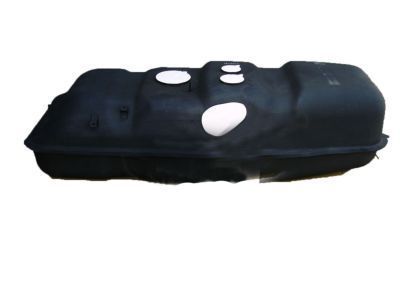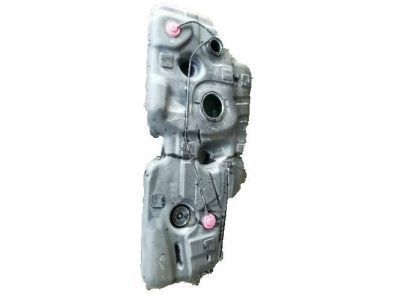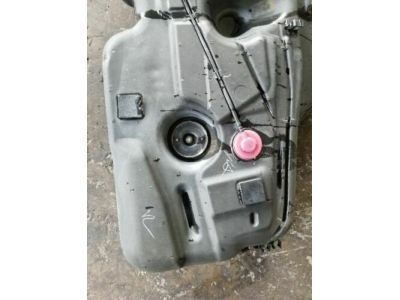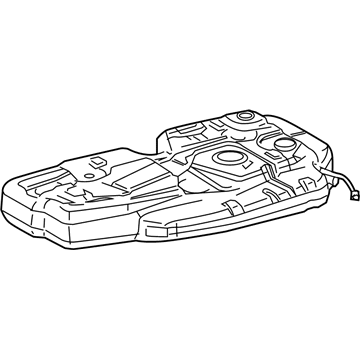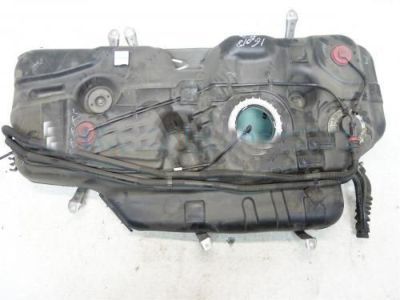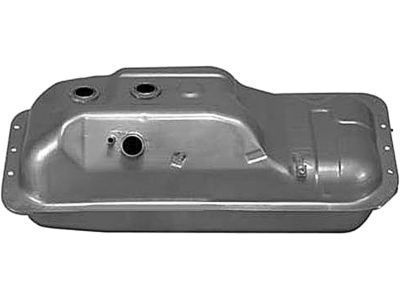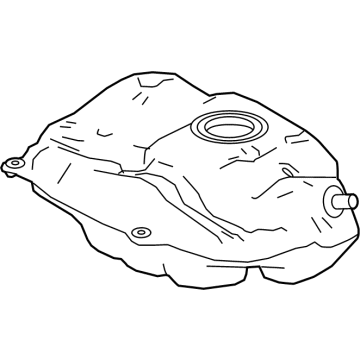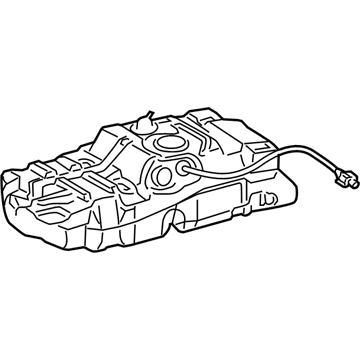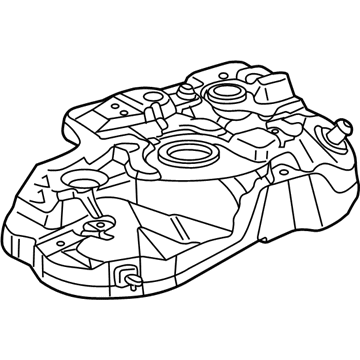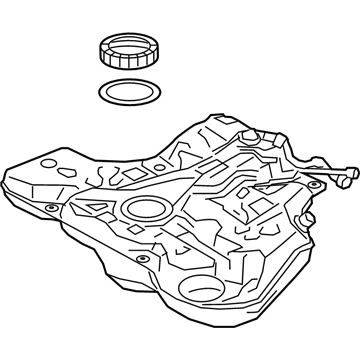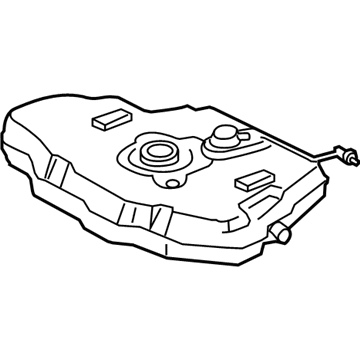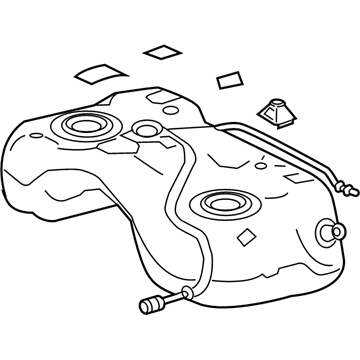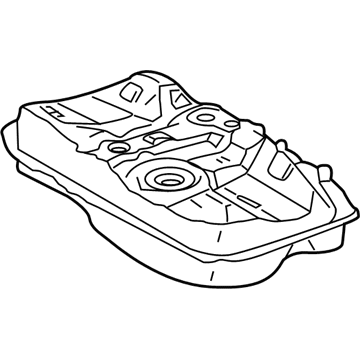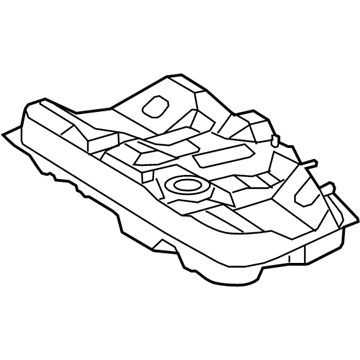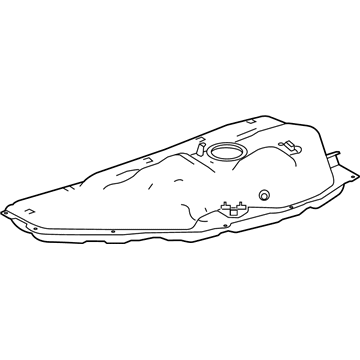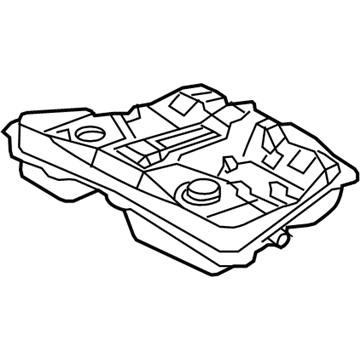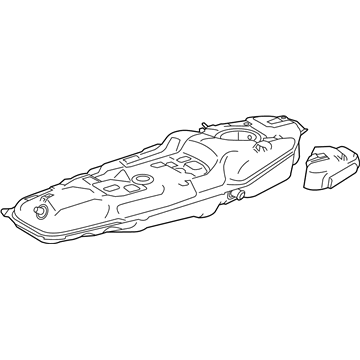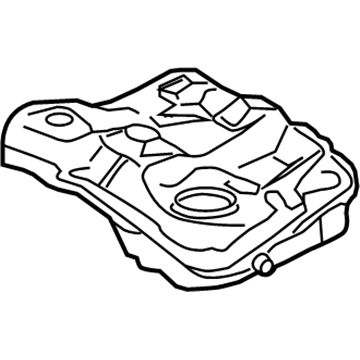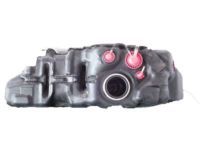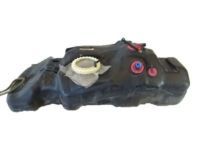×
ToyotaParts- Hello
- Login or Register
- Quick Links
- Live Chat
- Track Order
- Parts Availability
- RMA
- Help Center
- Contact Us
- Shop for
- Toyota Parts
- Scion Parts
My Garage
My Account
Cart
OEM Toyota Fuel Tank
Gas Tank- Select Vehicle by Model
- Select Vehicle by VIN
Select Vehicle by Model
orMake
Model
Year
Select Vehicle by VIN
For the most accurate results, select vehicle by your VIN (Vehicle Identification Number).
203 Fuel Tanks found

Toyota Fuel Tank
Part Number: 77001-34070$1009.91 MSRP: $1480.04You Save: $470.13 (32%)Ships in 1-3 Business DaysProduct Specifications- Other Name: Tank Sub-Assembly, Fuel
- Replaces: 77001-34042

Toyota Fuel Tank
Part Number: 77001-08080$714.47 MSRP: $1047.06You Save: $332.59 (32%)Ships in 1-3 Business DaysProduct Specifications- Other Name: Tank Sub-Assembly, Fuel; Tank Assembly, Fuel

Toyota Fuel Tank
Part Number: 77001-08090$791.88 MSRP: $1160.51You Save: $368.63 (32%)Ships in 1-3 Business DaysProduct Specifications- Other Name: Tank Sub-Assembly, Fuel; Tank Assembly, Fuel
Toyota Fuel Tank
Part Number: 77001-3D931$642.29 MSRP: $941.28You Save: $298.99 (32%)Ships in 1-3 Business DaysProduct Specifications- Other Name: Tank Sub-Assembly, Fuel
- Replaces: 77001-35997
Toyota Fuel Tank
Part Number: 77001-02850$567.60 MSRP: $831.83You Save: $264.23 (32%)Ships in 1-2 Business DaysProduct Specifications- Other Name: Tank Sub-Assembly, Fuel; Tank Assembly, Fuel
- Replaces: 77001-12D60
Toyota Fuel Tank
Part Number: 77001-12E90$544.68 MSRP: $798.22You Save: $253.54 (32%)Ships in 1-2 Business DaysProduct Specifications- Other Name: Tank Sub-Assembly, Fuel; Tank Assembly, Fuel
- Product Specifications
- Other Name: Tank Sub-Assembly, Fuel; Tank Assembly, Fuel
Toyota Fuel Tank
Part Number: 77001-0A120$514.03 MSRP: $753.32You Save: $239.29 (32%)Ships in 1-3 Business DaysProduct Specifications- Other Name: Tank Sub-Assembly, Fuel; Tank Assembly, Fuel
Toyota Tank Sub-Assembly, Fuel
Part Number: 77001-0E010$1012.18 MSRP: $1483.37You Save: $471.19 (32%)Ships in 1-3 Business DaysProduct Specifications- Other Name: TANK SUB-ASSY, FUEL; Fuel Tank
Toyota Tank Sub-Assembly, Fuel
Part Number: 77001-48112$617.88 MSRP: $905.51You Save: $287.63 (32%)Ships in 1-3 Business DaysProduct Specifications- Other Name: TANK SUB-ASSY, FUEL; Fuel Tank
- Replaces: 77001-48110, 77001-48111
Toyota Fuel Tank
Part Number: 77001-12E60$583.83 MSRP: $855.61You Save: $271.78 (32%)Ships in 1-3 Business DaysProduct Specifications- Other Name: Tank Sub-Assembly, Fuel; Tank Assembly, Fuel
Toyota Fuel Tank
Part Number: 77001-02490$707.89 MSRP: $1037.42You Save: $329.53 (32%)Ships in 1-3 Business DaysProduct Specifications- Other Name: Tank Sub-Assembly, Fuel
- Replaces: 77001-12A00, 77001-12B90, 77001-01080
Toyota Fuel Tank
Part Number: 77001-0R090$599.95 MSRP: $879.24You Save: $279.29 (32%)Ships in 1-3 Business DaysProduct Specifications- Other Name: Tank Sub-Assembly, Fuel; Tank Assembly, Fuel
- Replaces: 77001-42300
Toyota Fuel Tank
Part Number: 77001-33161$813.78 MSRP: $1192.61You Save: $378.83 (32%)Ships in 1-3 Business DaysProduct Specifications- Other Name: Tank Sub-Assembly, Fuel
- Replaces: 77001-33160, 77001-06060
Toyota Fuel Tank
Part Number: 77001-33142$713.15 MSRP: $1045.13You Save: $331.98 (32%)Ships in 1-3 Business DaysProduct Specifications- Other Name: Tank Sub-Assembly, Fuel; Tank Assembly, Fuel
- Manufacturer Note: CALIFORNIA SPEC
Toyota Fuel Tank
Part Number: 77001-0E081$592.00 MSRP: $867.59You Save: $275.59 (32%)Ships in 1-3 Business DaysProduct Specifications- Other Name: Tank Sub-Assembly, Fuel; Tank Assembly, Fuel
- Replaces: 77001-0E080
Toyota Fuel Tank
Part Number: 77001-02270$452.24 MSRP: $662.77You Save: $210.53 (32%)Ships in 1-3 Business DaysProduct Specifications- Other Name: Tank Sub-Assembly, Fuel; Tank Assembly, Fuel
Toyota Fuel Tank
Part Number: 77001-42281$559.09 MSRP: $819.35You Save: $260.26 (32%)Ships in 1-3 Business DaysProduct Specifications- Other Name: Tank Sub-Assembly, Fuel
- Replaces: 77001-42280
Toyota Fuel Tank
Part Number: 77001-0A130$539.23 MSRP: $790.24You Save: $251.01 (32%)Ships in 1-3 Business DaysProduct Specifications- Other Name: Tank Sub-Assembly, Fuel; Tank Assembly, Fuel
- Product Specifications
- Other Name: Tank Sub-Assembly, Fuel; Tank Assembly, Fuel
| Page 1 of 11 |Next >
1-20 of 203 Results
Toyota Fuel Tank
Choose genuine Fuel Tank that pass strict quality control tests. You can trust the top quality and lasting durability. Shopping for OEM Fuel Tank for your Toyota ? Our website is your one-stop destination. We stock an extensive selection of genuine Toyota parts. The price is affordable so you can save more. It only takes minutes to browse and find the exact fit. Easily add to cart and check out fast. Our hassle-free return policy will keep you stress-free. We process orders quickly for swift delivery. Your parts will arrive faster, so you can get back on the road sooner.
Toyota Fuel Tank Parts and Q&A
- Q: How to remove and install the fuel tank on Toyota 4Runner?A:The fuel tank removal process starts with relieving fuel system pressure before operators can remove the rear floor service hole cover by holding the rear No1 seat assemblies LH and RH while removing a tear-off floor mat and unscrewing 3 screws followed by connector disconnection. The first step includes separating the fuel-tank-to-filler-pipe hose from the filler pipe while draining fuel before setting a mission jack to the fuel tank protector to remove six bolts. Remove the lock claws from the retainer by pinching its tabs to extract the two fuel tank tubes while checking for any dirt around quick connectors then covering tubes with vinyl bags. The fuel tank breather tube sub-assembly needs disconnecting by pressing the tab of the retainer and removing the tube while the fuel tank vent hose requires disconnecting by placing the connector deeply inside and pinching portion A before pulling out the connector. Remove the fuel tank assembly while setting a mission jack below the tank and then lose the two bolts followed by the two fuel tank bands followed by the fuel tank. Unlock the 2 tubes joint clips to remove the fuel tank main tube and the return tube and the fuel tank cushion. Use Special Service Tool 09808-14020 (09808-01410, 09808-01420, 09808-01430) to remove the retainer from the fuel suction with pump & gauge tube assembly before pulling out the assembly while taking care to avoid bending the sender gauge arm. Start installation by pinching the tube's retaining tab and pulling out the tube until it reaches completion. Then proceed to take off the fuel tank to filler pipe hose. Install the new fuel tank to filler pipe hose first before pushing the tube connector into the fuel tank breather tube sub-assembly until it clicks and tightening the retainer. First install a new gasket onto the fuel tank before setting the fuel suction tube assembly to the tank and inserting the spline into its keyway. Finish by installing a new retainer while using the Special Service Tool for tightening. The tube joint clip requires connection to the fuel tank main tube after ensuring no scratches or foreign objects remain present as the installation continues with three new fuel tank cushions. A mission jack should be used to install the fuel tank assembly which must be tightened using 2 bolts and 2 fuel tank bands to a torque value of 40 N.m (408 kgf.cm, 30 ft.lbf). There are two steps to complete before finishing this procedure: connect the fuel tank main tube to the return tube then to the fuel tank breather tube by matching the clicking parts. The back floor service hole cover installation process starts with connecting the connector after which the 3 screws must be installed before reattaching the rear floor carpet assembly.
- Q: How to install the fuel tank on Toyota Tacoma?A:The installation process for the 2TR-FE fuel tank begins with attaching the No. 1 fuel tank protector through 4 clips. You must attach the fuel tank to the filler pipe hose while securing it with proper pipe clamp bolt tightening. Set the fuel pump assembly into the tank with the arm of the sender gauge free of any bends before installing a fresh gasket on the fuel tank. Insert the spline portion of the fuel suction tube assembly in the keyway of the fuel tank before installing a new retainer which should align its mark with the tank rib while you use tool 09808-01410 to torque the retainer to 740-780 degrees range A. Following the setup of Special Service Tool: 09808-14020 09808-01410 rotate the retainer 740 degrees to 780 degrees clockwise to place the mark inside range A. After that install both fuel tank tubes using the two joint clips while inspecting for any scratches or foreign elements around the attached parts and confirming correct clip positioning. Place the fuel tank assembly on the mission jack while you secure the fuel tank vent hose through connecting its connector with the pipe until it clicks into place then verify all connections are tight. Secure the fuel pump connector followed by attachment of the fuel tank to filler pipe hose which is then covered by the fuel pump cover. Fasten the 2 fuel tank bands to the 2 pins and 2 clips and 2 bolts while torquing them to 62 Nm (632 kgf-cm, 46 ft-lbf). The fuel tank breather tube needs to be attached while its locking mechanism clicks into position then you should install a checker onto the pipe before applying torque to the clamp bolt. Thoroughly connect the main tubes and return tubes of the fuel tank where they lock into position to become secure. Connect the negative battery cable by first adding fuel before installation of the clamp and torquing the cable screw to 3.9 Nm (40 kgf-cm, 35 in-lbf). Finally, check for fuel leaks.
Related Toyota Parts
Browse Toyota Fuel Tank by Models
Tacoma 4Runner Camry Tundra Corolla RAV4 Highlander Prius Sienna Land Cruiser Pickup FJ Cruiser 86 Sequoia T100 Avalon Celica Supra Yaris MR2 Matrix Solara Venza GR86 Echo C-HR Cressida Grand Highlander Paseo Previa Prius C Prius Prime Corolla Cross Corolla iM Crown GR Corolla MR2 Spyder Prius V Starlet Tercel Van Yaris iA Prius Plug-In GR Supra Prius AWD-e RAV4 Prime
